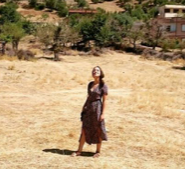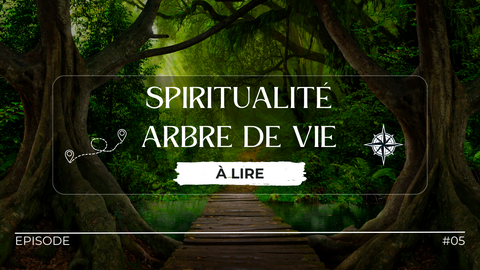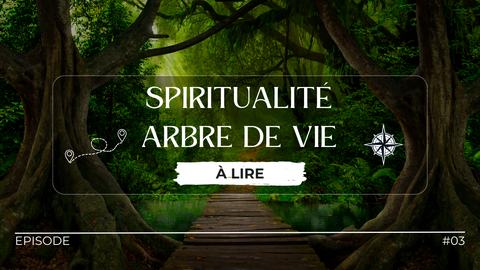
Meaning of the Egyptian Tree of Life
of reading
We find the first references to the concept of the tree of life among the ancient Egyptians. To find out more, you have to look into the subject of Egyptian history.
Introduction: Egyptian history
Three thousand years before our era, one of the most powerful civilizations of the time was established in Egypt. During a period which will extend over more than two millennia, what we call Ancient Egypt will impose itself in the Mediterranean region and will leave behind many secrets and mysteries of which we are still unaware.
In addition to the Pyramids, the Sphinx, or even the hieroglyphs and papyri which constitute a large part of the knowledge of this civilization, the Egyptian people were a very religious people and religion occupied a very important place both in their daily life and in their way of seeing. the world, life and death. The Egyptian pantheon contains a multitude of deities, all with representation, symbols and stories associated with them. Among these symbols and among the visions that the Egyptians have of the world, we find that of the Tree of Life, a heart tree which carries the universe and whose legend supports an entire folklore.

What is the origin of the Egyptian tree of life ?
The tree of life, in all its symbolism, is associated with the creation of the world. Each religion has its own conception of the origin of the world and Ancient Egypt does not break this rule. Although the stories differ a little depending on the region, it remains similar whatever the texts. According to these texts, there was originally nothing but chaos, Noun.
This is represented as a gigantic expanse of immobile water but which contains all the elements allowing life to be given. All that was missing was a Creator, a being, who would know how to manipulate these elements; this being was called Atum and the day he finally woke up, he left chaos to conceive the world. He gave birth to many gods, such as Ra the sun, Nut, the sky, and Ged, the Earth. It was with the latter that a hill emerged from the chaos and on this hill a tree grew. Born from a sacred dune, the tree was able to breathe life and the earth was populated.
Representation and symbolism of the Egyptian tree of life
There are two main representations of the Egyptian Tree of Life.
The first is that of a gigantic pillar tree, whose branches support the celestial vault. The trunk is the center of the universe and the roots sink into the abyss. It would be the link between the sky, the earth and everything that was born from their exchange. Even if the nature of this tree is not established, the sycamore is the tree that is most often mentioned when we talk about a sacred tree in Egypt. The latter had a goddess associated with him and he was even worshiped in certain cults.
The second representation is that of a lotus flower. According to legend, the tree that emerged from chaos first appeared in the form of a celestial egg. This egg would subsequently have hatched and taken on the appearance of a lotus flower. The latter, with the help and protection of the gods, would then have developed and become an all-powerful tree. Moreover, an interesting fact to note, the hieroglyph which symbolizes the Tree of Life represented three lotus branches at the end of which flowers bloomed, full of life.
The use of a tree to represent life and its perpetual cycle is not trivial. Indeed, the tree is at the origin of the world a leafless and inanimate trunk. However, as soon as spring arrives, it is covered with buds, then with flowers of life, and its branches unfold. Then when winter returns, its leaves fall and it dies, only to be reborn a few months later. The symbolism here is very strong, especially for the Egyptian people who believe in life after death and rebirth. The Tree of Life therefore symbolizes life and resurrection. Many deities were associated with him, making him all the more essential in cults.
To go further, the Egyptians saw the tree as a symbol of balance and harmony. Stability and duration are two very important concepts for this civilization. They are both represented by the pillar Djed, the latter itself being associated with the spinal column of Osiris. Here again, the symbolism of the tree takes on its full meaning, the spine representing the trunk and Osiris being the god of death and resurrection.
Let us not forget that in Egypt, the lands are arid and difficult to cultivate. The presence of trees – and more generally vegetation – is associated with the presence of water and therefore life. If there are trees, then this land is cultivable and it is possible to live there. In addition, its branches provide arbi, its wood makes it possible to build houses and tools and we can eat from its fruits. These details are very important to understand why the tree is so present and revered.
History and Legends of Ancient Egypt
You will no doubt have understood, but the Tree of Life is extremely present in the religion of Ancient Egypt. Therefore, the stories and legends that surround it are innumerable, starting with the one that directly follows the creation of the world; Noun, chaos, furious that Atum created order from him, releases monstrous serpents whose aim is to destroy the new world. Among these serpents, we find the giant serpent Apophis who fights the Sun god Ra during the night, each dawn bearing witness to his umpteenth defeat. This serpent also attacks the Tree of Life. He will be defended by the goddess Bast (or Bastet), goddess of heat, motherhood and daughter of Ra, represented by a cat.

Another most primordial story in Egyptian religion: the death and resurrection of Osiris. Even if the versions differ, they all have their origin in Osiris's rise to the throne of Egypt. Osiris then became the very first pharaoh, thus arousing the jealousy and envy of his brother Seth. The latter then conspires to kill his brother. With the help of several followers, he designed a box to match his brother's measurements and found a way to trap Osiris inside during a meal.
Once his brother is sealed in the casket, Seth throws him into the Nile and Osiris drowns. Carried by the river, the box finds itself caught in the roots of a small tree which, upon feeling the divine power of the body inside, becomes gigantic and ends up absorbing it entirely. Osiris then becomes one with the Tree. It becomes a Tree of Life.
Then, the king of the region decided to cut it down to build his castle. And Isis, the wife of Osiris, can then find the body of her husband and bring him home. Seth still tried to get rid of him by cutting him into several pieces and scattering them throughout Egypt. Isis will eventually bring them all together and, with the help of the god Anubis, will be able to properly bury Osiris. Subsequently, the god Ra will bring him back to life. But being already dead, Osiris could no longer reign over the living and therefore became the god of death and resurrection.
From Ancient Egypt to today
For the ancient Egyptians, the Tree of Life was under the protection of the gods and should be worshipped. He was a strong symbol of life, death, spirituality and awakening of consciousness. Many Egyptians also prayed to the gods – and more particularly the goddesses – at the foot of trees. The tree metaphorically embodies the balance between all things, between life and death, between earth and sky. He embodies rebirth.
Today, these principles seem to be somewhat outdated, but the tree still has a very strong place in current representations and in popular culture. We find it for example in works like Avatar, The Tree of Life, or Naruto Shippuden. Certain references are also present in the Lord of the Rings or Game of Thrones books. Since the notions of life and death are universal and common to all cultures, it is not surprising that the symbol of the tree still persists and remains anchored in contemporary and modern representations.
















